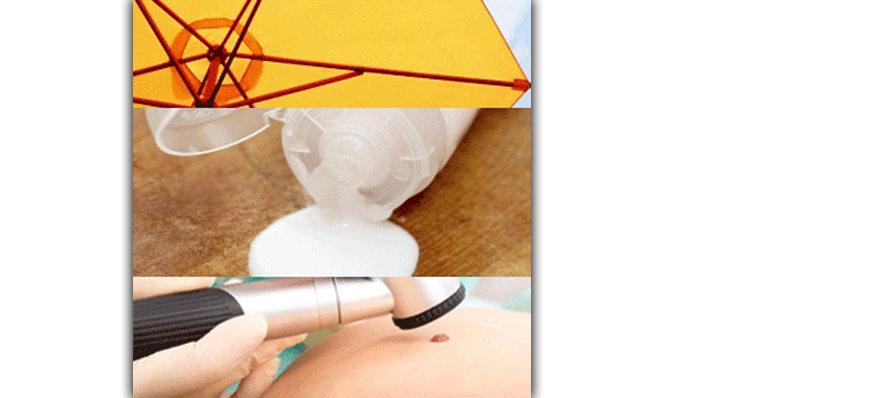An M.D. Article Contribution. At Skintelligencenter.com, we include articles contributed by doctors who wish to provide helpful information to their patients and the public at large, or who respond to our requests to use them as professional resources. Doctors may or may not prefer to remain anonymous and we respect this preference. These resource articles do not in any way imply an endorsement by the physician of Skintelligencenter or VMV HYPOALLERGENICS®—they are intended for informational purposes only. While written by or with resource professionals, these articles should not be relied on for diagnostic accuracy or applicability to your particular skin, which requires an in-person ocular consultation with a qualified physician. For appropriate care for your skin, please consult your dermatologist.
For many of us, the advent of winter is heralded not by a specific date or temperature, but by the desiccation of our skins. For some of us, dryness can get so bad that our skins shrivel, flake, and crack; we feel “pulled”, like we’re too tight in our own skins (and we’re not talking about bulging bellies from festive gobbling). What can we do to prevent this “raisin”-d’être? We asked a leading skin expert — Dr. Verallo-Rowell, a published dermatologist and dermatopathologist (specialists at diagnosing skin at the cellular level) — to break down the dry skin dilemma for us:
Causes of Dry Skin
Dry skin occurs primarily from the loss of two very important things: lipids (oils) and water.
The outermost layer of skin is also called its barrier layer. This barrier layer is largely made up of oil (lipids: free fatty acids, ceramides) and water.
In this oil and water mixture, the lipids regulate the water content so that when, for example, the skin loses lipids, transepidermal water loss (the loss of water through the skin) increases to many times more than normal.
Why is this important? Because it begins a “snowballing” effect that eventually not only causes dry skin but maintains the dry state.
The outer keratin layers need a concentration of water of 10-20% in order for them to maintain their integrity (healthy structure and function). When water loss occurs, skin cells curl upwards, shrink, scales develop, and cell volume decreases (imagine a grape shrinking and shriveling into a raisin from water loss). The decrease in cell volume leads to cells becoming inelastic. And when this happens fissures or cracks in the skin can occur, leading to inflammation and the inflow of cellular factors that disrupt skin integrity further.
When your skin is in this compromised condition, it allows the easier entry of ingredients that can produce an allergic or irritant reaction, and microorganisms that can cause infection — all of which contribute to the state of dry skin being maintained. In this state, be extra careful about what you apply. A product you think will give you relief could instead, if it contains irritants, cause further damage and lead to increased dryness.
To counteract the conditions that predispose people to get dry skin, remember: it is crucial to maintain adequate oil and water in the barrier layer of your skin. Here are some simple things you can do to help reduce skin dryness:
Overcome Your “Tepidation”
Hot water showers and baths can feel wonderful. But hot water encourages the evaporation of water from the skin barrier. Try bathing with tepid water and take shorter showers (which has the added benefit of saving water).
Get Steamy
Cold air outside and warm air inside produces low humidity. This is made worse by central and forced-air heating. Some things you can do to help counteract this environment:
- Use a humidifier in your home. In your bedroom, try to position it as near you as possible without compromising safety.
- If you live in warmer climates, lower the setting of your air-conditioners.
- In offices that need air conditioning year round, be extra conscientious about your skin care regimen. This also applies to those working outdoors who have to deal with the additional drying factor of wind on skin.
Prioritize Skin pH-riendliness
A high pH level (8-9) denatures (destroys the characteristic or natural properties of) the skin’s proteins. Due to the way they’re made, most solid bar soaps inherently have a high pH. Use creamier cleansers instead of soaps. For hydration, use oils, moisturizers, and other products with a pH level adjusted to the skin’s normal pH of 5 to 6.
Balmy Bathing
Avoid the many products made for bathing, facial cleansing, hand washing, shaving, etc., that use de-greasing agents which remove oil. Avoid rough scrubs that further deplete sebum. Instead, use hair care, liquid or cream cleansers for the face and body, and other products made to enhance oil-retention.
Mega Moisture
After bathing, towel dry lightly or dab gingerly to keep some of the water on your skin. While still damp, immediately apply an oil or moisturizer on your skin to replace the oils lost in bathing.
Massage in gently but thoroughly
Use bland oils or moisturizers without additives or preservatives, such as virgin coconut oil. Virgin coconut oil has the added benefit of its fatty acids being native to skin — so instead of merely preventing water loss, it helps replace lost lipids.
For very dry areas, you can add petroleum jelly (again, one with no additives). Massage well into the moist skin. For those with exceptionally dry skin apply the petroleum jelly before bathing to protect the problem areas.
Take note that the most commonly affected areas are the lower legs, arms, thighs, sides of the abdomen, hands, and face.
Stay Regimen-ted
It is important to be consistent with your regimen. Use a hydrating (as opposed to a de-greasing) cream cleanser for the face, a non-drying toner (perhaps one with active anti-aging ingredients) or if your skin is already very dry, skip the toner altogether, and an intensive moisturizer. Look for products with no allergens (fragrances, preservatives, dyes, etc.) and other irritants).
Extra Care
Certain conditions make some people more prone to having really dry skin year-round.
- Medical problems that may affect metabolic states (such as thyroid diseases or diabetes), or medications such as diuretics that dehydrate the skin.
- Malnourishment from bad diets, drastic weight loss, or erratic or poor nutrition — this leads to a loss of vitamins, minerals, and sulphur needed for the proper production and regeneration of the skin’s barrier layer.
- Elderly people who increasingly have lowered sebaceous gland activity (the skin produces less and less oil).
- Beach worshippers or winter sports athletes can get lots of exposure to the sun during winter: it is very important to use a broad spectrum sunscreen (on skin and lips) to prevent burning which further increases water loss.
Avoid allergens and irritants (remember even some natura ingredients can be irritating) in your hair care, makeup, skin care, and even clothing: dark colors (dyes), formaldehyde resins in the processing of clothing, chemicals used in dry-cleaning, stretch materials, and other materials that are potential irritants or allergens.
If you develop inflammations, infections, or lesions from cracks in the skin, use a gentle broad-spectrum antibiotic with your doctor’s guidance.
If you think any of these apply to you, particularly in the wintertime, you need to pay greater attention to your skin care, be conscientious about following these winter guidelines, and consider getting a patch test from your dermatologist.
VMV RECOMMENDATIONS:
Articles contributed by doctors do not contain product recommendations for ethical reasons, and we at VMV HYPOALLERGENICS® believe in protecting the skintegrity of our resource physicians. Below are some products that we at Skintelligencenter.com feel can be recommended based on the preceding article. They are our “skinformed” selections based on the information given above and not necessarily recommended by the medical author of the article.
For Bathing:
- Essence Skin-Saving Hair, Body and Bath products.
- Grandma Minnie Coo and Clean Baby Wash (hair and body shampoo)
For Moisturizing (for the face and body):
- Creammmy Rich Intensive Moisture Milk (daily moisture)
- Grandma Minnie Mommycoddling All-Over Lotion (daily moisture)
- Know-It-Oil Clinically-Validated, 100% Pure USDA-Certified Organic Virgin Coconut Oil (for very dry skin)
- Grandma Minnie Oil’s Well Nurturing Do-It-Oil (for severe dryness, or atopic dermatitis and similar conditions)
- Grandma Minnie’s The Big, Brave Boo-Boo Balm (for severe patches of dryness)
Moisture Rich SuperSkin Care Cleanser, Toner, and Moisturizer
Sun and Light Protection:
- Armada Post-Procedure Barrier Cream 50+, a chemical (also called organic) sunscreen-free sun and light screen for indoor and outdoor use. Doubles as a physical barrier cream to help prevent contact irritations. Subtly tinted green with safe mineral pigments to help cancel out redness.
- Armada Baby 50+: chemical (also called organic) sunscreen-free sun and light screen for indoor and outdoor use
- Grandma Minnie’s The Big, Brave Boo-Boo Balm for severely dry lips, for very sensitive skin, for healing of cold sores, helps hasten the healing of herpetic sores
- Armada Moisturizing, Protective Lip Balm 60+ (not for those with extremely sensitive skin)
Click here for more on very dry, flaking skin.
Click here for more on how hypoallergenicity can help dry skin.
Click here to learn about our skintoxicating, soothing Vx Facials for dry skin.
Click here for more on patch tests.
Click here for more on the VH-Rating System for validating hypoallergenicity




